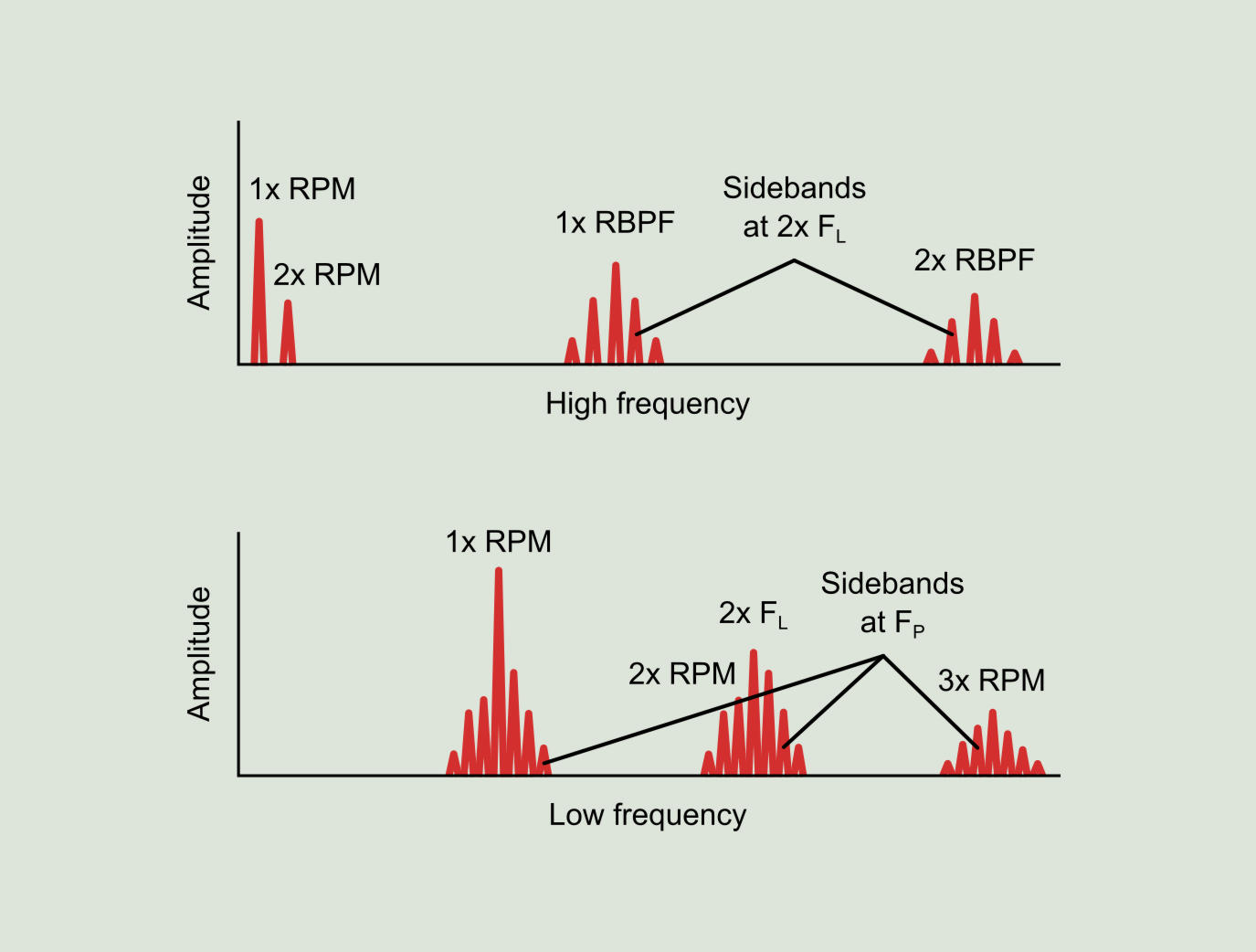Vibration Analysis Without Machine Information

This has happened to every analyst: you are analyzing a machine, collecting vibration data, and then you find out that the data of the machine is not available. Many people think you have a crystal ball to guess the future. What can we do in these cases?

There are many reasons why an analyst may not have the information of the machine when performing an analysis. It can be due to disorganization, lack of access to the documentation or simply the information does not exist.
Given this situation, there are three paths to take:
- Global values analysis.
- Simplified spectral analysis.
- Obtaining the data on your own.
Here we explain to you the advantages and disadvantages of each option and what circumstances you must consider.
Global Values Analysis
With this option, you do not commit to making a detailed diagnosis of the machine and its components but to comparing the vibration readings to the history, the limits recommended by the manufacturer, similar machines or the norm.
.jpg)
Advice:
If you are a service company, it is recommendable that you expressly establish in the terms and conditions of the contract the following: “In case of not having information of the machine and its dynamic transmission elements, a global values analysis (or level 1 analysis) will be performed.”
This is recommended in the case of non-standard machines, machines with gearings, machines with high rpm or machines you have never analyzed before. It is better not to try to find a relationship between signal frequencies and possible characteristic frequencies. Remember that a vibrations report must have evidence and not assumptions.
Simplified Spectral Analysis
In addition to the global values analysis, it is possible to see the spectra and discard certain typical failure such as unbalance, misalignment, structural looseness or rotating clearances.

An analyst with a medium experience knows how to identify the fundamental rotational frequency of a machine, or the 1X. Generally, it is the signal with the highest magnitude in the speed spectrum. If you can identify the 1X, you can make a simplified spectral analysis by looking at harmonics, sub-harmonics, non-harmonics to see if there is any noise or high vibration at high frequency.
If you are an analyst who is familiarized with the waveform along time in acceleration, you may also have an idea of the condition of the bearing from visualizing that signal.
Spectral analysis with limited information is recommended for standard machines with fixed RPM and a history of vibrations. You must always clarify in the report that you did not count on the technical information of the machine.
Obtaining the Data on Your Own
If you consider it convenient and there is no documented information on the machine, you can obtain the information about the machine on your own. The first thing to do is verifying the RPM of the machine with a tachometer and identify it in the spectrum. From there, with the specifications of the motor plate, you can obtain its power and sometimes the code of the bearings. If you are working with pumps, fans or gearings, you will have to wait for the next scheduled maintenance to count the number of vanes, blades or gears.

Remember to use machine sheets and get the maintenance team used to the collection of machine data in their tasks so that little by little they can get all the information in the entire machine pool.
Lastly, the most important thing is to make the analysis without machine data an exception and not the rule in your predictive maintenance diagnosis. Predictive technologies involve a high level of knowledge of the dynamics of the machine and its components. Every time you find yourself in this situation, remember to write in the recommendations of your reports that it is necessary to collect information on the machine for future inspections.
What is Power-MI?
Power-MI is a cloud based solution that allows you to design & manage your condition-based maintenance plan integrating all techniques into one platform. Easy reporting, automatic work orders and CMMS integration.
Read more